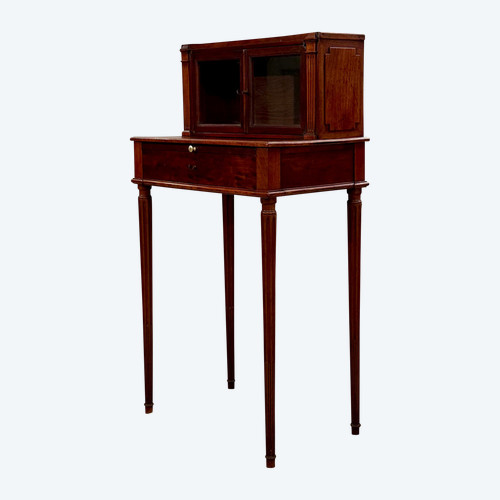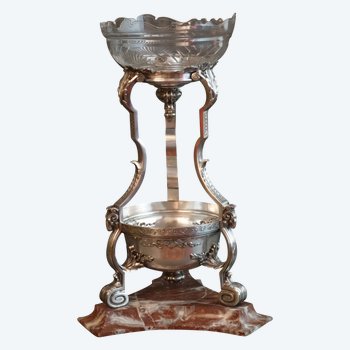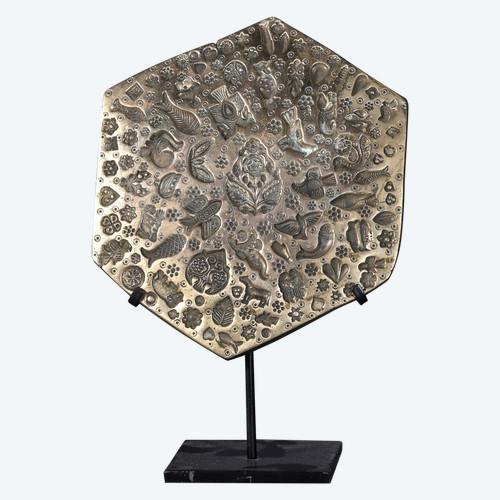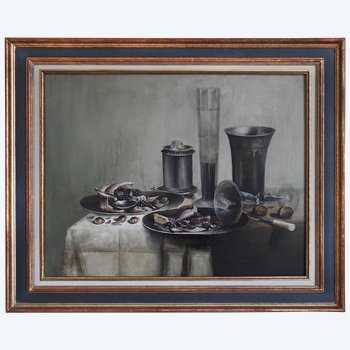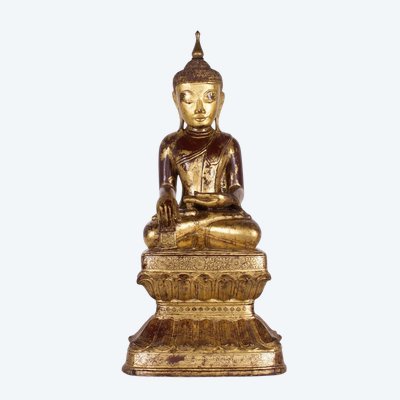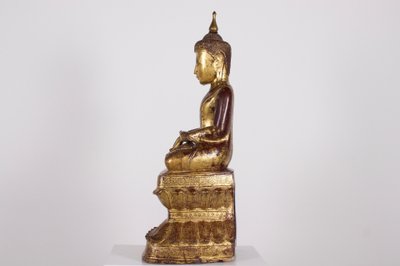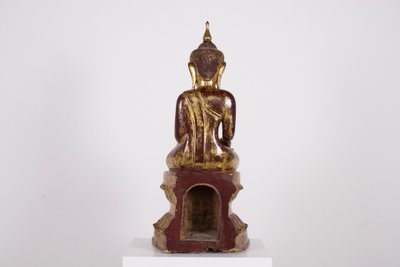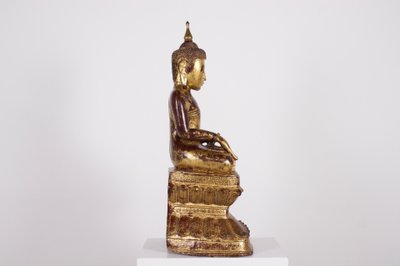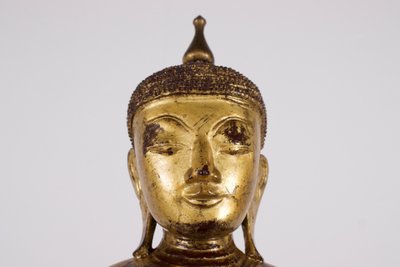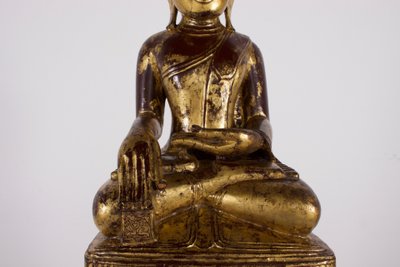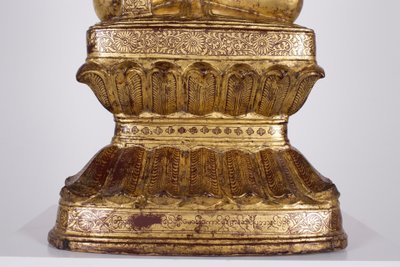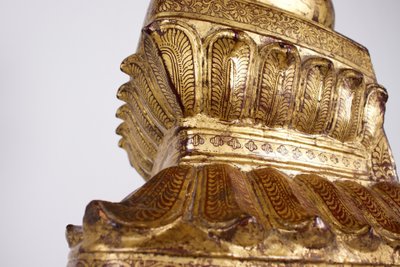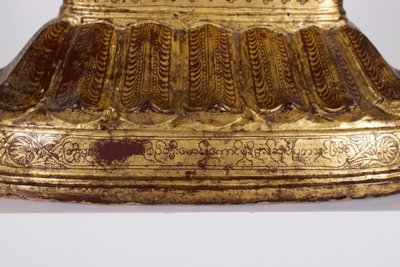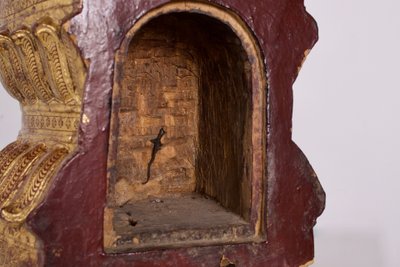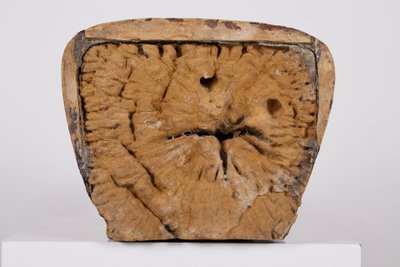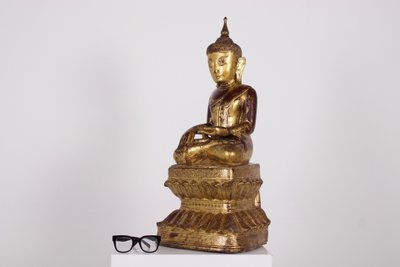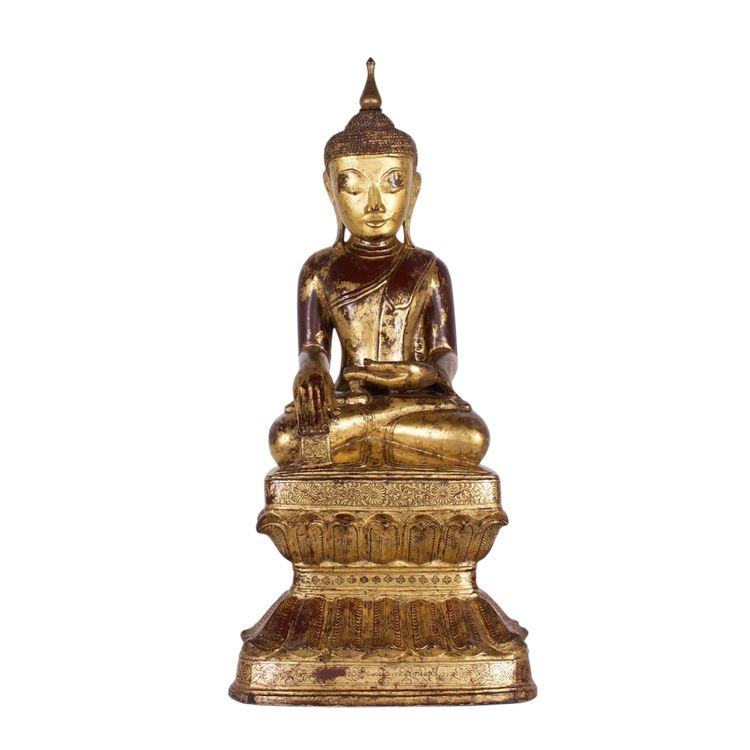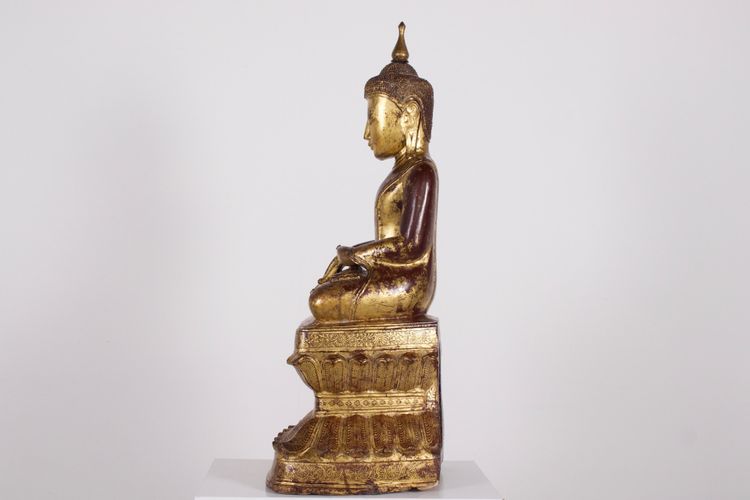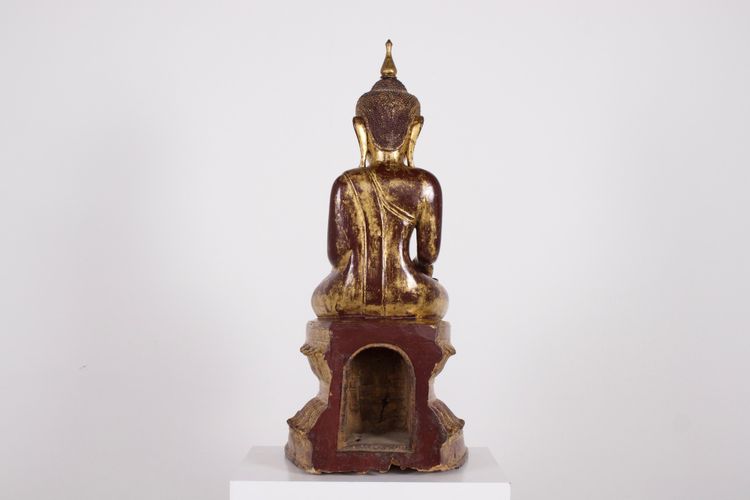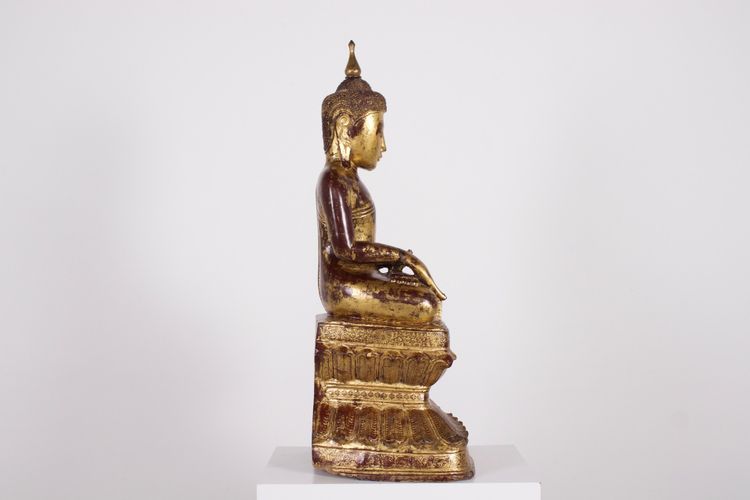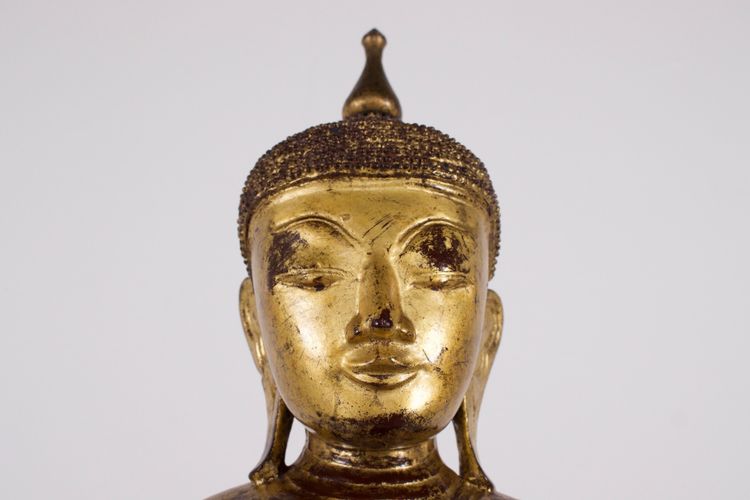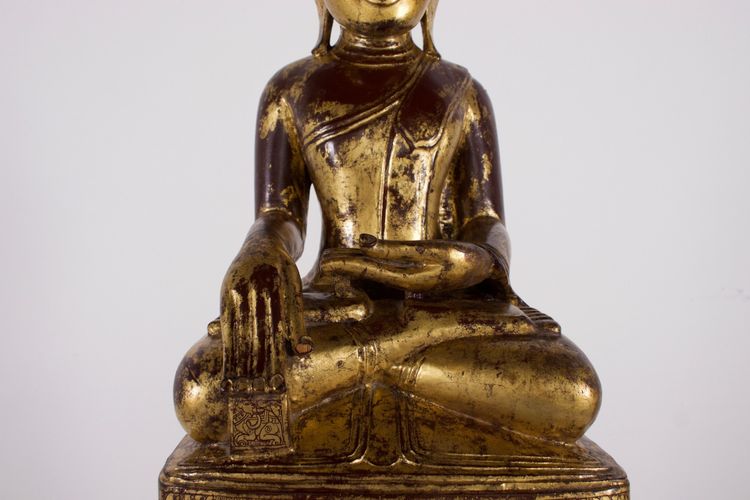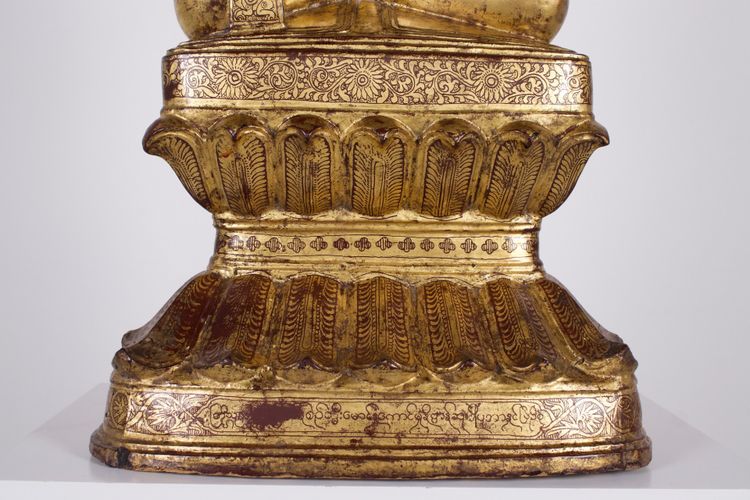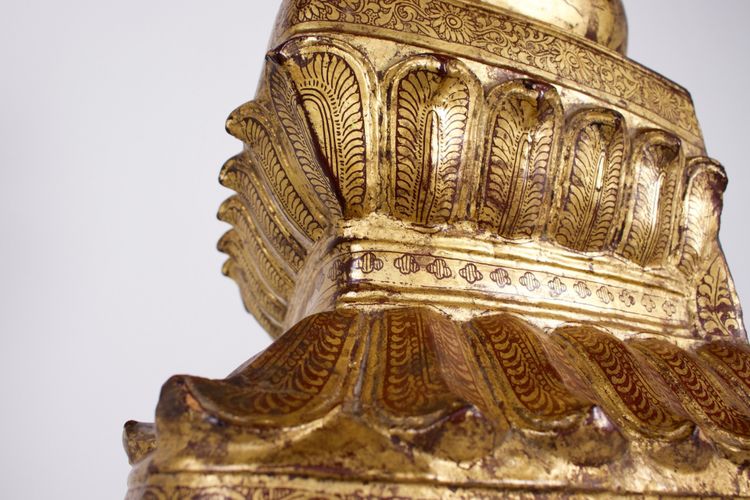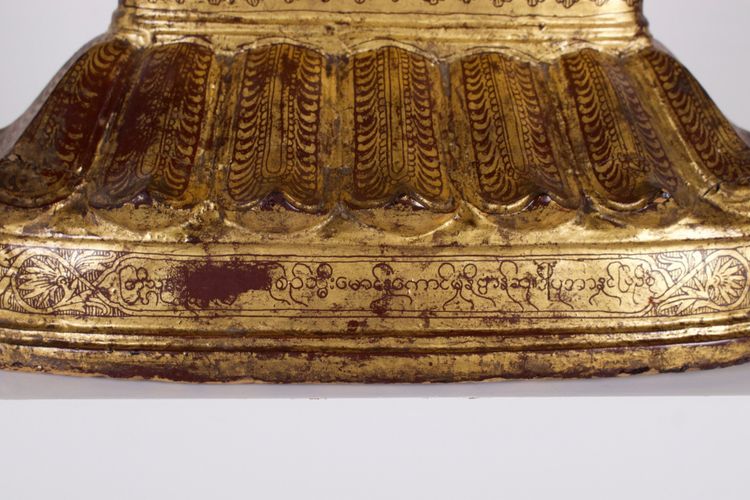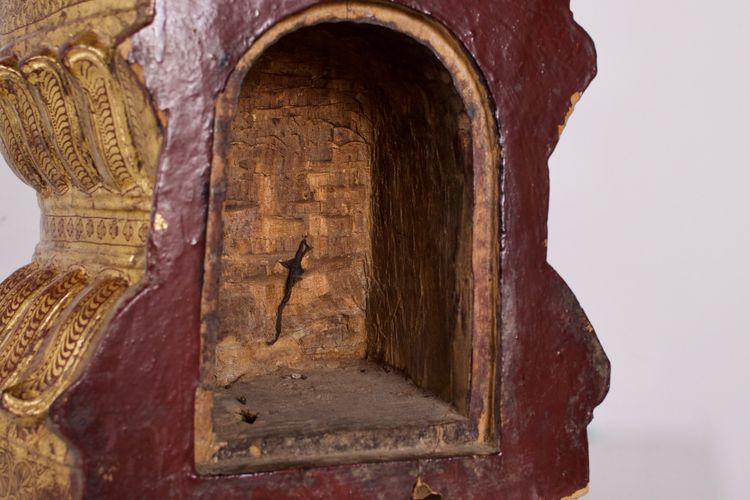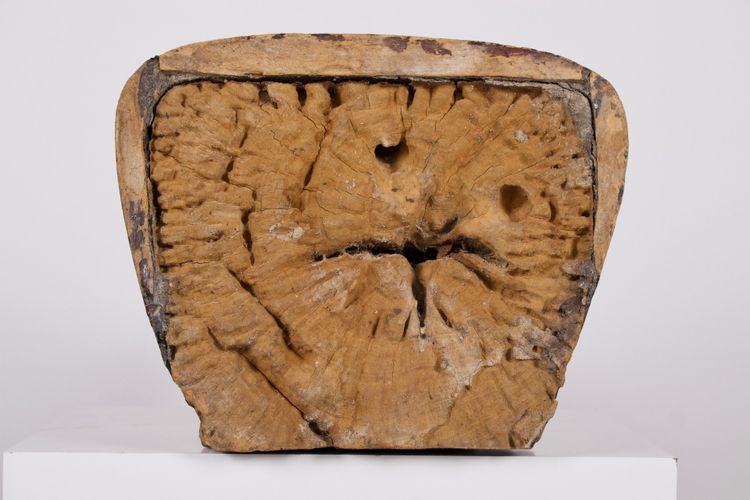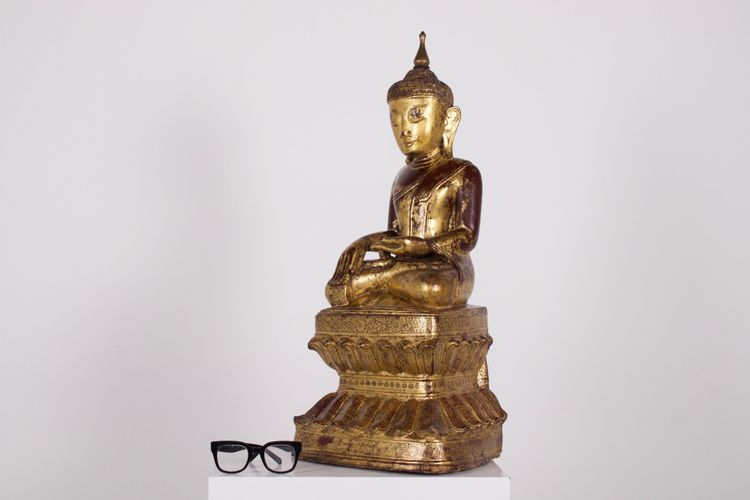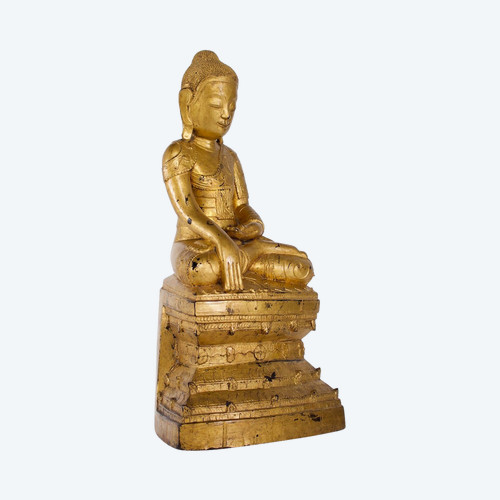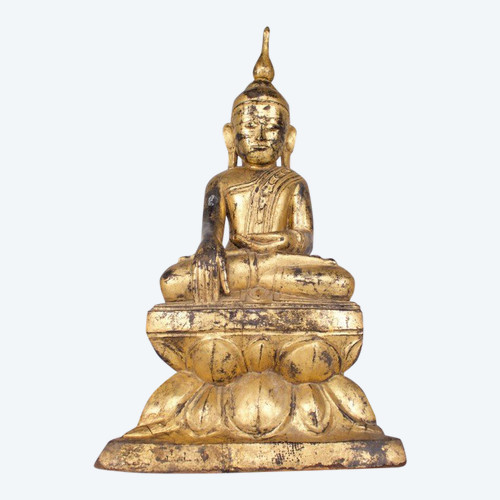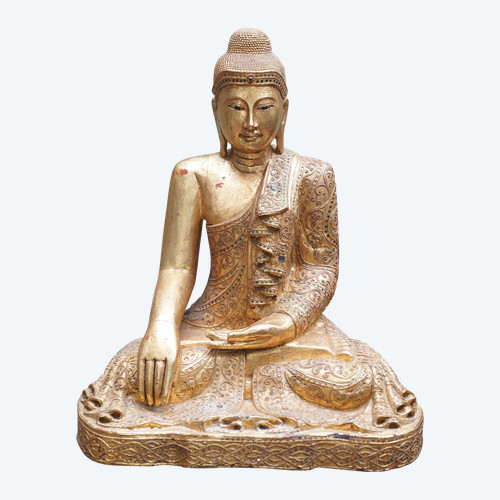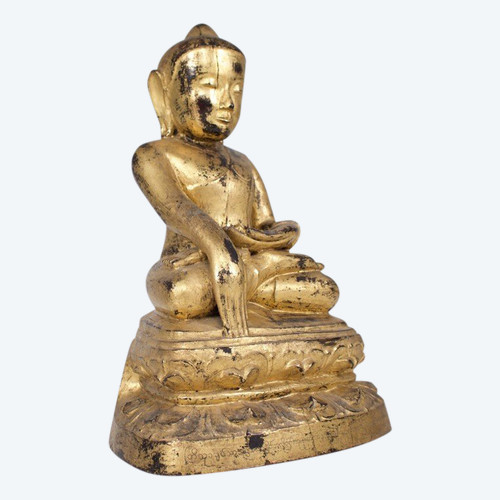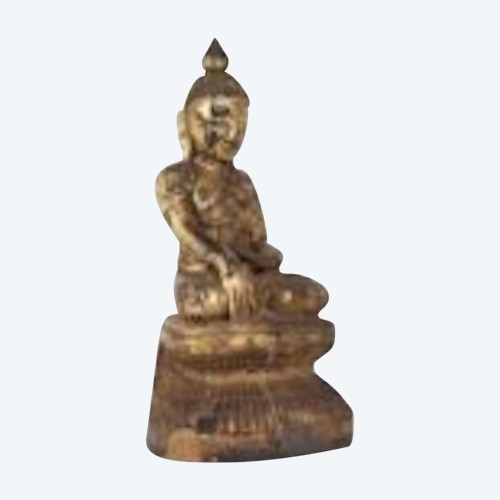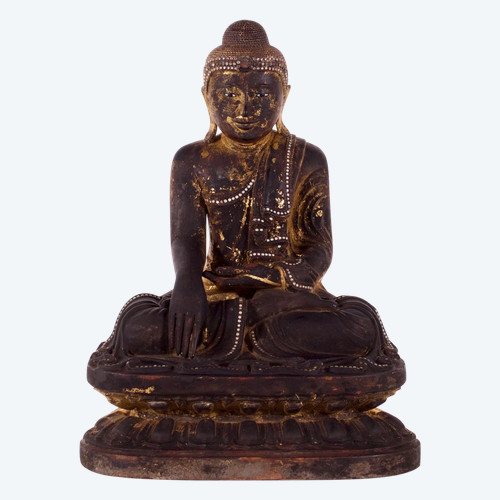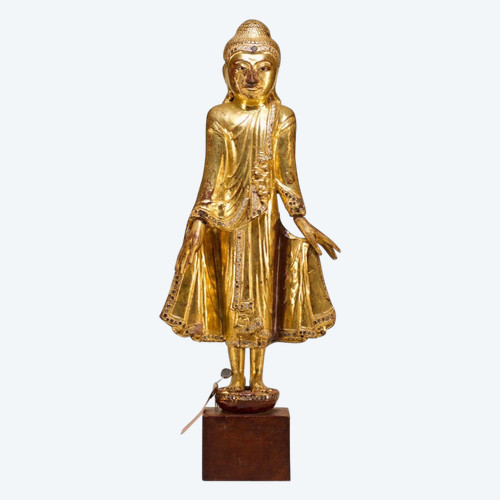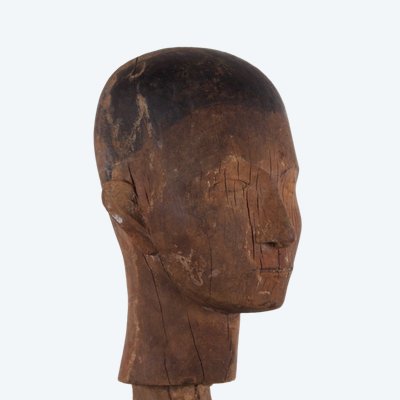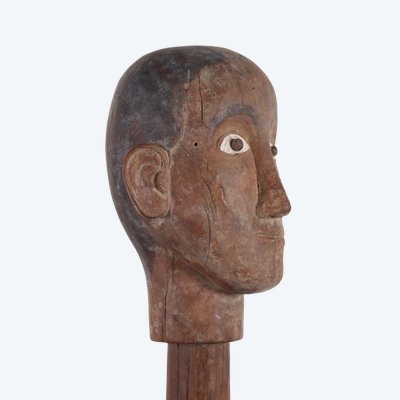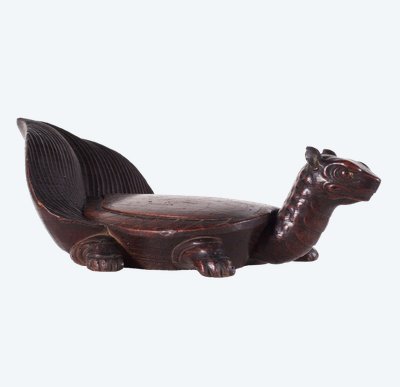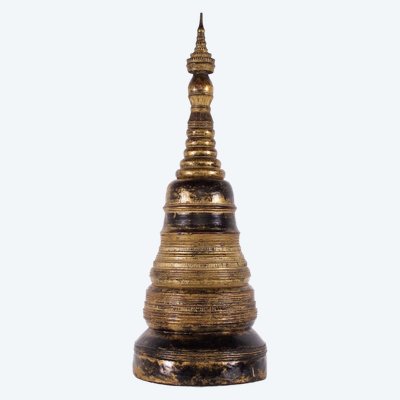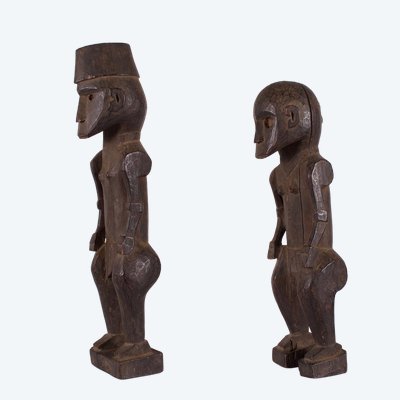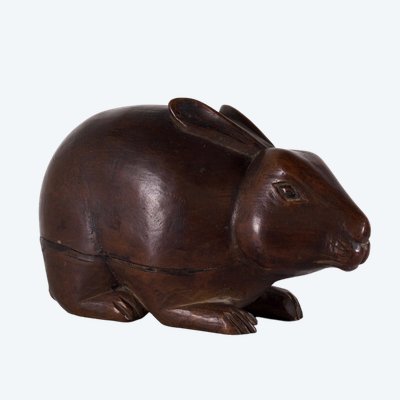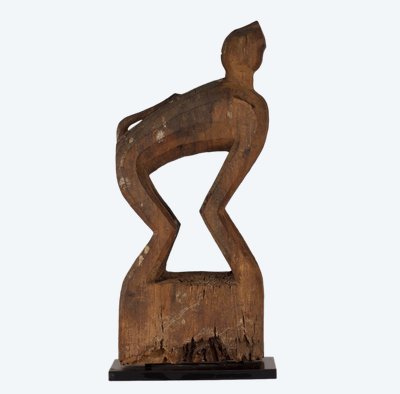This description has been translated and may not be completely accurate. Click here to see the original
Large Maravijaya Buddha, carved wood, wine-colored lacquer, and gilding. Burma (Myanmar), Shan Princely States, Konbaung period (1752-1885).
The Awakened One is depicted in vajrasana on his stylized double lotus base. His right hand calls upon the Earth goddess to witness his awakening and his victory over Mara, the demon of obstacles and illusions.
The Buddha image is very well preserved in its entirety, richly decorated. Behind the throne, adorned with double rows of lotus leaves, one can see the open reliquary cavity. Donor inscriptions are present at the foot of the sculpture's face.
Provenance: Estate of Claude de Marteau.
Sold with certificate of provenance. H 74 cm x W 33 cm x D 28 cm
In Theravada Buddhism, particularly in Thailand and Burma, the posture of the seated Buddha witnessing the earth is one of the most emblematic representations of the tradition. This posture, known as the bhūmisparśa mudrā (gesture of witnessing the earth), symbolizes the Buddha's awakening under the Bodhi tree in Bodhgaya.
In Theravada iconography, this position is ubiquitous, particularly in Burmese and Thai statues. Buddha is depicted in a meditative posture, legs crossed in the lotus position, his left hand resting on his knees in a gesture of concentration, while his right hand touches the ground with his fingertips. This gesture evokes the moment when Siddhārtha Gautama, confronted by the assaults of the demon Māra, invokes the earth as a witness to his merits accumulated over his past lives. According to tradition, the earth itself responds by triggering a flood that washes away Māra's forces, thus sealing the Buddha's victory over illusions and his access to enlightenment.
In Thailand, this posture is particularly associated with the iconography of Sukhothai and Rattanakosin style Buddhas, where it is often depicted with slender forms and a serene expression, emphasizing the idea of transcendence and spiritual purity. In Burma, particularly in the Mandalay and Konbaung styles, the same posture is ubiquitous, but the statues often present a more rounded and benevolent face, with meticulous details on the folds of the garment and the ornamentation of the base. This iconography expresses a fundamental aspect of Theravāda Buddhism: the importance of the parami (perfections) accumulated by the Buddha through his previous lives and the primacy of karma on the path to enlightenment. Unlike the Mahāyāna and Vajrayāna traditions, where Buddha is often depicted in transcendent forms or adorned with esoteric symbols, Theravāda favors a refined and didactic approach, centered on the historical example of Gautama Buddha. Thus, the posture of witnessing the earth becomes a constant reminder for the faithful of the power of merit and the determination required to achieve liberation.
View this Maravijaya Buddha, Burmese Konbaung, in full screen mode on Vintage Addict
Ref: BILVIZ1TCR
 Gold Bracelet With Micro-Mosaic Medallions
1.900 € EUR
Gold Bracelet With Micro-Mosaic Medallions
1.900 € EUR

